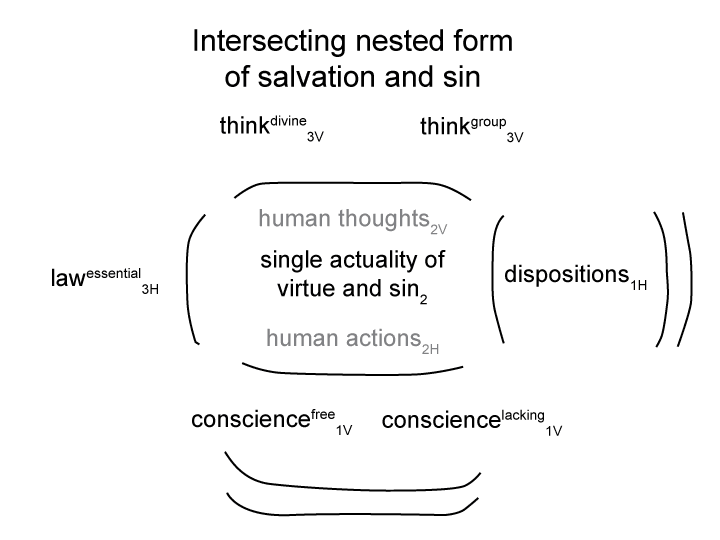Man and Sin by Piet Schoonenberg (1964) 1.7D
Summary of text [comment] page 47
Next on the list: The opposition (to God) derives from our freedom. The opposition materializes a variety of levels. It both resembles and differs from evil in the prepersonal level.
[In regards to the prior intersection, free will associates to consciencelacking and consciencefree.
The comment on “levels of freedom” associates to two points.
One concerns the diversity of thinkgroups that speech alone talk makes possible. Even if a person is not in opposition to God, there are many groups to join, each with its own independence. Both the individual and the group may find ways to oppose God.
Two concerns the horizontal level of the intersection. This nested form interscopes with other nested forms. The nested form of lawessential interscopes with other expressions of the natural law. Each interscoping nested form constitutes a level of lawessential that must be accounted for by thinkgroup_or_divine.]

